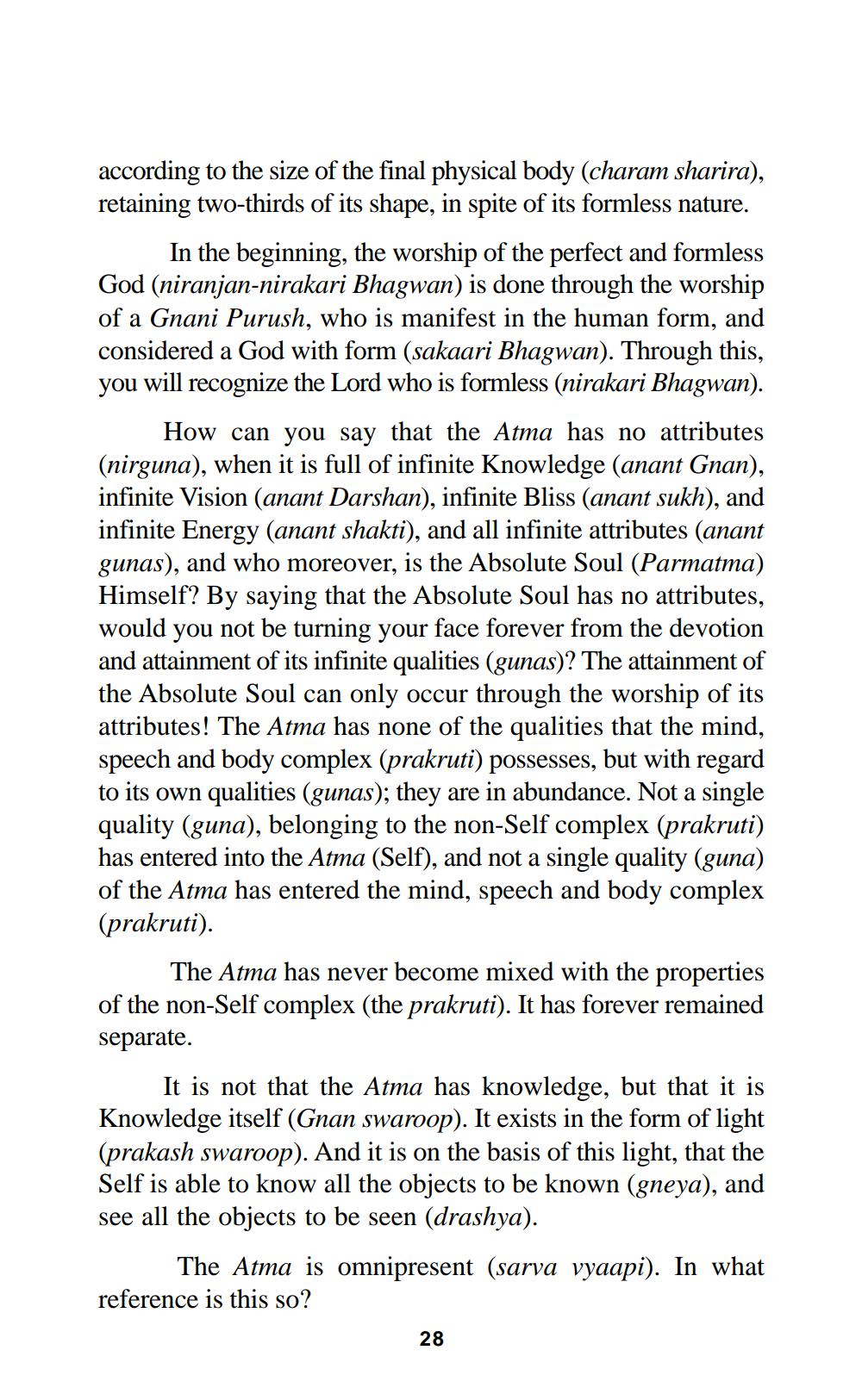________________
according to the size of the final physical body (charam sharira), retaining two-thirds of its shape, in spite of its formless nature.
In the beginning, the worship of the perfect and formless God (niranjan-nirakari Bhagwan) is done through the worship of a Gnani Purush, who is manifest in the human form, and considered a God with form (sakaari Bhagwan). Through this, you will recognize the Lord who is formless (nirakari Bhagwan).
How can you say that the Atma has no attributes (nirguna), when it is full of infinite Knowledge (anant Gnan), infinite Vision (anant Darshan), infinite Bliss (anant sukh), and infinite Energy (anant shakti), and all infinite attributes (anant gunas), and who moreover, is the Absolute Soul (Parmatma) Himself? By saying that the Absolute Soul has no attributes, would you not be turning your face forever from the devotion and attainment of its infinite qualities (gunas)? The attainment of the Absolute Soul can only occur through the worship of its attributes! The Atma has none of the qualities that the mind, speech and body complex (prakruti) possesses, but with regard to its own qualities (gunas); they are in abundance. Not a single quality (guna), belonging to the non-Self complex (prakruti) has entered into the Atma (Self), and not a single quality (guna) of the Atma has entered the mind, speech and body complex (prakruti).
The Atma has never become mixed with the properties of the non-Self complex (the prakruti). It has forever remained separate.
It is not that the Atma has knowledge, but that it is Knowledge itself (Gnan swaroop). It exists in the form of light (prakash swaroop). And it is on the basis of this light, that the Self is able to know all the objects to be known (gneya), and see all the objects to be seen (drashya).
The Atma is omnipresent (sarva vyaapi). In what reference is this so?
28




